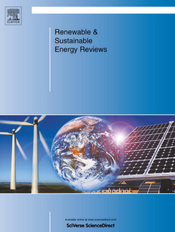J.M.Pearce (talk | contribs) |
J.M.Pearce (talk | contribs) m (→Source) |
||
| Line 13: | Line 13: | ||
==Source== | ==Source== | ||
* K. Calvert, J. M. Pearce, W.E. Mabee, | * K. Calvert, J. M. Pearce, W.E. Mabee, “[https://www.sciencedirect.com/science/article/pii/S1364032112005667 Toward renewable energy geo-information infrastructures: Applications of GIScience and remote sensing that can build institutional capacity]” ''Renewable and Sustainable Energy Reviews'' '''18''', pp. 416–429 (2013). [http://www.academia.edu/2180165/Toward_renewable_energy_geo-information_infrastructures_Applications_of_GIScience_and_remote_sensing_that_build_institutional_capacity open access] | ||
Revision as of 00:41, 9 May 2013
Toward renewable energy geo-information infrastructures: Applications of GIScience and remote sensing that can build institutional capacity

Abstract
Sustained policy support is necessary in order to drive a transition toward renewable energy (RE). The ability to realize RE policy objectives is constrained by a range of geographic factors related to resource potential, the distribution of resources, land availability/suitability, the absorptive capacity of proximal infrastructure, and local socio-political acceptance. With this in mind, this paper provides a systematic review of how geographic information science and remote sensing techniques have been applied to reduce uncertainties surrounding renewable energy development, with emphasis on policy and planning needs. The concept of a ‘geo-information infrastructure’ is used to bring coherence and direction to this growing body of literature. The review highlights four underdeveloped research areas, including: Resolving issues of scalar discordance through comprehensive analysis at local and regional scales; mapping interactions in space of multiple supply options to deliver more accurate and sophisticated estimates of RE potential in an area and to identify competitive and symbiotic land-use situations; using energy resource maps as primary inputs into the development of technology road-maps; and developing geographically explicit indicators which can signal priority areas for RE recovery based on social and environmental returns on investments. In each case, suggestions moving forward are provided. The paper identifies knowledge-based institutional networking as a pathway through which local and regional public authorities can be equipped with the resources necessary to build and mobilize a geo-information infrastructure.
Source
- K. Calvert, J. M. Pearce, W.E. Mabee, “Toward renewable energy geo-information infrastructures: Applications of GIScience and remote sensing that can build institutional capacity” Renewable and Sustainable Energy Reviews 18, pp. 416–429 (2013). open access

